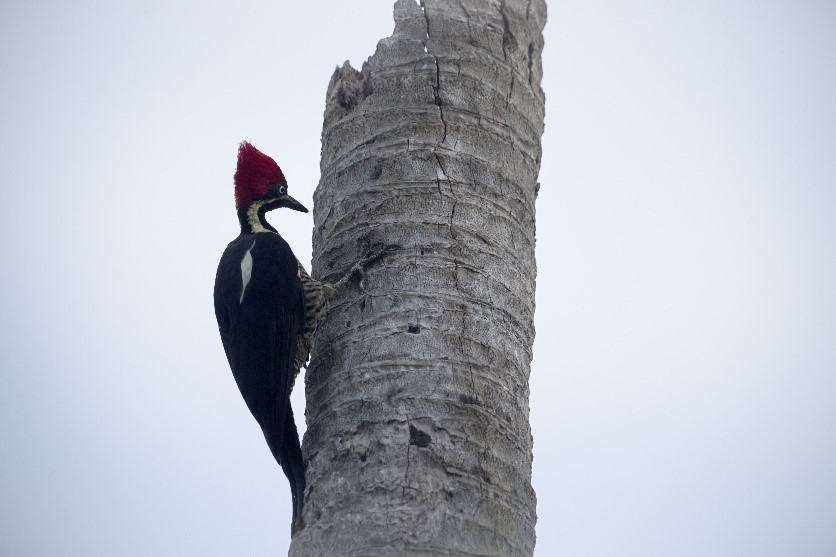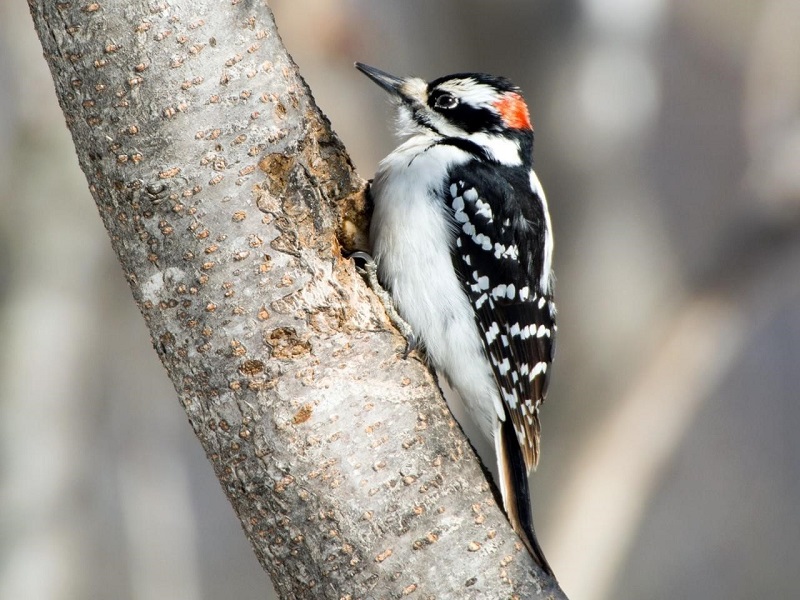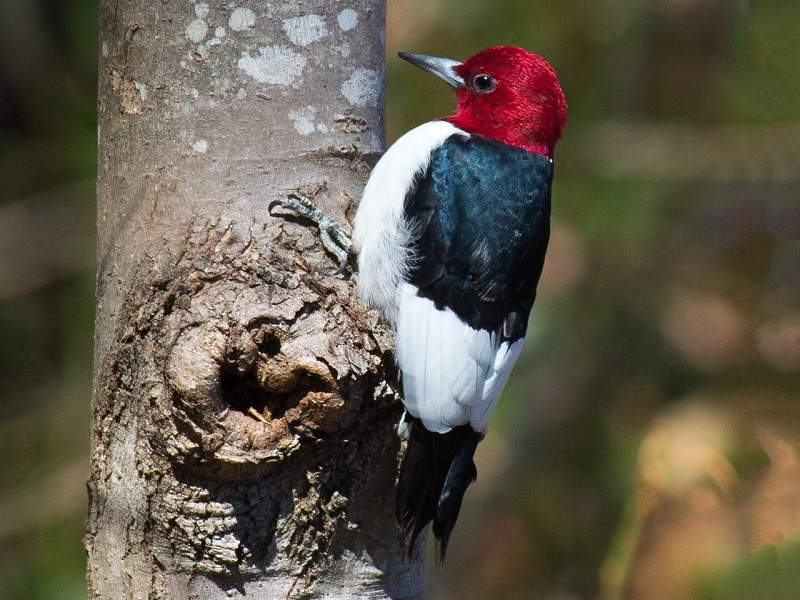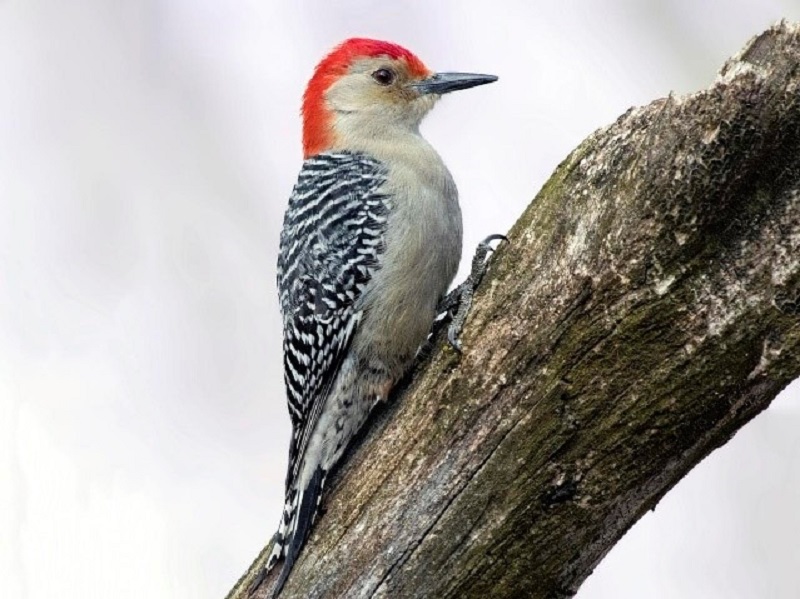Types of Florida Woodpeckers

Understanding Woodpeckers in Southwest Florida is the First Step to Preventing Home Damage
There are several types of woodpeckers that call Southwest Florida home.
And, due to Southwest Florida’s urbanized environment over the last several decades, woodpeckers now flock to residential areas more than ever before.
Woodpeckers prefer to make their homes near wood siding, wood-covered fireplace chimneys, rain gutters, large limbs, and dead trees. The drumming sound that is created is a way for the bird to find a mate and communicate with others.
Ivory-Billed Woodpecker (Campephilus principalis)
One of the largest woodpeckers, the ivory-billed woodpecker is approximately 20 inches in length and has a wing span of 30 inches.
To compare, that’s almost the same size of a crow. This species of woodpecker has a white stripe that stretches down each side of the neck and a prominent crest.
Building nests in trees like red maple, elm, and hackberry among others, the nest can be found below broken branches. The reason is twofold: the broken branch provides protection for the nest and the wood is typically softer in that area, making it easier to build a nest.

Aside from grainy photos of what may or may not be an ivory-billed woodpecker, there haven’t been confirmed sightings of the bird since the early 2000s. This has placed the ivory-billed woodpecker on the Critically Endangered IUCN Red List.
Destruction of the woodpecker’s habitat has caused a decline in population. It is possible they may be found in remote areas.
Hairy Woodpecker (Picoides villosus)
This medium-sized woodpecker has a fairly square head and a chisel-like bill that is nearly the same length as its head. Comparatively, the hairy woodpecker is roughly the same size as the robin.
Often confused for its cousin, the downy woodpecker, the hairy woodpecker has black wings with white checker marks and a large white patch down its back.

Hairy woodpeckers can be found in open woodlands, suburbs, and areas that are infested by the bark beetle. This species will spend more time pounding and excavating its food than smaller woodpeckers and will consume more wood-boring insects in addition to sap from damaged trees.
Red-Headed Woodpecker (Melanerpes erythrocephalus)
Red-headed woodpeckers, a year-round Florida resident, are medium-sized with somewhat large, rounded heads, and powerful bills that acts as a spike. Its appearance is striking with a black back and tail with a bold red head and neck.
In addition to the traditional method of hammering at wood to search for food, red-headed woodpeckers will search for food on the ground and can even catch insects while flying. Typically, this species will eat bugs such as crickets and spiders, but they will also eat fruits and nuts when insects aren’t available.

Red-headed woodpeckers prefer to live in open forests and agricultural areas, rather than dense forest areas like many of their counterparts. Nests are frequently made in trees that are dead or dying, approximately 80 feet above the ground.
Downy Woodpecker (Picoides pubescens)
Commonly found feasting at backyard feeders, parks and wooded areas, the downy woodpecker is barely larger than chickadees. This species of woodpecker has black feathers with extensive white spotting on the wings and down-like feathers on its back.
An acrobatic forager, the black and white woodpecker is comfortable perched on slender branches and suet feeders.

Rather than singing songs to communicate, downy woodpeckers drum against wood and metal to achieve the same goal.
This species has been known to build nests inside the walls of buildings. Structures with holes in siding and rooflines are enticing to the bird as they can create a larger opening for easier access. This creates the potential for severe structural damage.
Red-Bellied Woodpecker (Melanerpes carolinus)
Contrary to its name, the male red-bellied woodpecker has a red crown and the females have a red nape, rather than a red belly. This species has a wingspan of approximately 13 to 16 inches in length and are slightly larger than a robin.
The red-bellied woodpecker can be found in areas ranging from forests to residential areas with backyard feeders.

Red-bellied woodpeckers forage for insects in trunks and major limbs of trees but will also eat nuts and seeds that may have been stored in the tree by another animal. They have also been known to eat the eggs of smaller birds.






